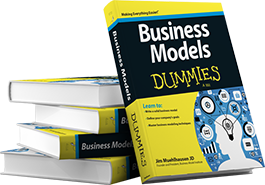Does Machinima Have the Winning Model
Youtube giant Machinima is pushing the envelope on the broadcast television model. Traditionally, networks spend massive amounts of money developing shows and content to be mass disseminated over controlled networks. Barriers to entry are high as well as the financial stakes. Over the past fifty years, television stations and networks have been some of the most profitable businesses in the Fortune 1000.
Machinima on the other hand is a YouTube-only broadcast station that specializes in a combination of machines, video game content, and cinema (that’s where Machinima name comes from). The idea behind the company is to target game enthusiasts to an online You Tube channel rather than a TV channel. According to the CEO Allen Debevoise, Machinima delivers over 1.5 billion game views each month to around 160,000,000 global viewers.
The contents are varied but mostly related to interactive games and range from game plays, views, videos, advertising to tips and entertainment segment. DeBevoise started this YouTube experiment, over four years ago. Back then, Machinima had less than 20 employees, today it has 160 and its YouTube channel has 4,000,000 subscribers and over 3,000,000,000 views of their videos.
Debevoise believes one of the primary reasons for their success is that they created a new cultural brand that targets the video gaming and video programming community. Machinima is partnering with traditional Hollywood studios such as Lions Gate and Warner Brothers to help them expand their original video programming. They have taken on large investors such as Google and venture capital which helped them collect over $35 million. If nothing else, this investment has certainly validated their approach.
The company feels they have not fully tapped on their gaming audience as there are over 230 million casual gamers that use the internet for gaming. The company intends to target these people to power its growth one game at a time. Furthermore, DeBevoise says advertisers are starting to look to YouTube as a way to reach the highly-prized demographic 18-34 year old males. Typically, this group has disposable income and is willing to spend it. However, there are others that argue that getting the advertisers to start trusting the fact that five minutes of someone’s brain and attention on YouTube can be just as good and possibly better than five minutes of their time on broadcast television.
Today, Machinima’s advertisers include movie studios such as Paramount, Sony, and Universal as well as videogame developer Electronic Arts. For Machinima Inc, taking a chance on hard-core gamers, casual gamers and YouTube might just be a winning strategy, but it’s too soon to tell if it’s a big win.
The real lesson of Machinima is the use of alternative broadcast channel YouTube vs. cable or broadcast television. Angry Birds has showed us that fame, views, and users can be translated into cash in many ways. YouTube allows for light monetization of views through PPC ads. However, the real money is elsewhere. What are some of the business model options for Machinima?
- Pre-launch promotion of new games. Millions is spent in advertising upcoming games. Could Machinima grab part of this loot?
- Assist game developers with characters, graphics, etc.
- Provide marketing consulting to game companies. Machinima promotes a similar product to the same audience. It is an easy stretch to believe Machinima would have excellent insight into the gaming marketplace.
- Sell games and consoles. This is not an overly-attractive option, but they do have the attention of the buyers.
- Create Angry Birds type characters and market peripheral goods such as toys, apparel, and the like.
- Launch a cable TV version of Machinima.
- Make a niche movie.
- Launch other YouTube channels for a younger audience. Machinima has animation and experience in the youth market. Machinima could create Sponge Bob-type characters for the under ten years old market.
What do you think of Machinima’s business model? Do you believe YouTube will continue to disrupt the traditional television model?
More sales is never the problem
Entrepreneurs are the best people in the world. They are ever-hopeful and optimistic. They believe there is a solution to every problem; and they are usually right. However, this same optimism tends to lead entrepreneurs to believe that all business problems can be solved with more sales. Many times, this is simply not the case.
Let’s examine some typical scenarios that entrepreneurs believe require more sales.
Scenario #1: Perpetually underfunded
In this scenario business is usually good and the company is typically growing. However, the company is always broke. The business owner or entrepreneur is constantly scouring for additional financing sources. In many instances the issue is not lack of funding its lack of margin. Selling more and more product at too low a margin creates ever-increasing strain on the business model. The way out of this problem is not by selling more it’s by selling for more margin.
Scenario #2: Can’t find any good help
This scenario is a cousin of scenario number one. Why can’t a business find good help? There are only a handful of reasons: quality people do not have the desire to work for the business because of some unattractive feature, the boss interviews and recruits so poorly that competitors be him or her out for the best people, or, most likely, the company under pays for the position. The company under pays because it has to. The company has to underpay because the funds simply aren’t available to pay fair market value for talented people. The funds are not available because the products are sold at too low a margin.
Scenario #3: Salespeople need to sell better
Many entrepreneurs believe the additional sales they need can be created by a harder working or higher performing sales force. Many times, it’s not the shortcomings of the sales force that are the issue is the shortcomings of the business model or the offering. The proverbial sell ice to Eskimos plan rarely works. Trying to get more sales when the real issue is product marketability only wastes time and money. In this case there’s no point in chasing more sales when it’s simply too difficult to get them.
Scenario #4: Back to the past
All successful product and service offerings eventually get outdated. Some entrepreneurs continue to ride these dying horses rather than find a new ride. More sales of a downward trending product is probably the wrong business model. Innovation is clearly what’s needed not more sales. Once an innovative product offering is created, more sales would be wonderful. In the meantime, putting organizational effort into additional selling only puts off the necessary innovation.
Do any of these hit home? If so, the solution is simple- stop working on the symptoms and start working on the real problem. Creating powerful innovation of your business model can act as a magic wand to rid these lesser issues.
Have you ever thought you had business issue A and found issue B to be the real culprit?
Are Black Friday Blowouts Bad for your Business Model?
Excellent business models require excellent margins. On this Black Friday 2010, it makes me wonder if $4 toasters are good for business models or bad for business models? Please join the conversation and vote above. The answer to the question is probably “Yes and No.” That is, Black Friday is both good and bad for business.
Let’s lay out the pros and cons of Black Friday Deals
Pros
- Drives large dollar volume of sales, albeit at very low margins.
- Generates goodwill.
- Defensive move to drive customer’s money into Store X’s coffers vs. their competitors.
- Drives more profitable add-on sales (although many 3am shoppers buy only the blowout deals).
Cons
- Drives large dollar volume of sales, albeit at very low margins. This generates much organizational effort for very little profit. After all, activities generate cost, not sales. Black Friday is the perfect example of “trading dollars.”
- May not generates goodwill at all as customers get frustrated over limited quantities of 32 inch televisions
- Courts the most cost conscious and least loyal customers
- Adds unnecessary stress to managers and employees stuck staffing stores at 2am.
- Cannibalizes profitable sales by emptying customers’ wallets on low margin purchases.
- Opens up company to potential lawsuits (injured customers, perceived injustice for lost deals).
I’ll bet that if we could secretly poll the large retailers, they would love to collude and collectively cancel Black Friday. This new American tradition props up sales, but at too great a cost. I look forward to hearing your opinions.











